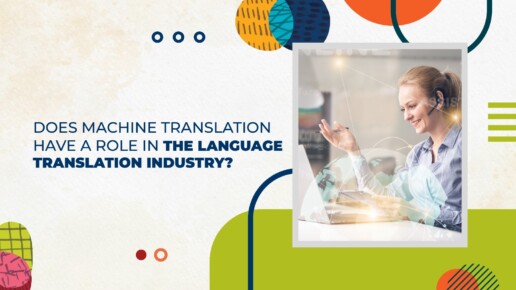Does Machine Translation have a role in the Language Translation Industry?
The Evolution of Language Translation
Language translation has come a long way since its early days of manual transcription and interpretation. From ancient scholars painstakingly translating texts by hand to modern-day professionals using sophisticated tools, the journey has been remarkable. One of the most significant advancements in recent years is the advent of machine translation (MT). This article explores the role of machine translation in the language translation industry, highlighting its benefits, limitations, and future prospects.
Understanding Machine Translation
What is Machine Translation?
Machine translation refers to the automated process of translating text or speech from one language to another using computer software. There are several types of machine translation, including rule-based, statistical, and neural machine translation. Key players in the industry include tech giants like Google, Microsoft, and emerging AI-driven startups that are continuously improving their translation algorithms.
How Machine Translation Works
Machine translation operates through different methodologies:
- Rule-Based Machine Translation (RBMT): This method relies on a comprehensive set of linguistic rules and dictionaries. It requires significant human input to establish these rules but can be very precise.
- Statistical Machine Translation (SMT): SMT uses statistical models based on bilingual text corpora to generate translations. It learns from existing translations and can handle a wide range of language pairs.
- Neural Machine Translation (NMT): The most advanced method, NMT uses artificial neural networks to predict the likelihood of a sequence of words. It is capable of producing more fluent and natural-sounding translations.
Artificial intelligence and machine learning play a crucial role in enhancing these methodologies, making translations more accurate and contextually appropriate.
Benefits of Machine Translation
Speed and Efficiency
One of the primary advantages of machine translation is its speed. Machines can translate large volumes of text in a fraction of the time it would take a human translator. This is particularly beneficial for businesses that need to process multilingual content quickly, such as global news agencies or e-commerce platforms.
Cost-Effectiveness
Machine translation offers a cost-effective solution compared to traditional human translation services. Many online tools provide free or affordable translation options, making it accessible to individuals and small businesses with limited budgets.
Accessibility
Machine translation helps break down language barriers, making information more accessible to a broader audience. It enables real-time translation for travelers and casual users through apps and devices, fostering better communication and understanding across different cultures.
Limitations and Challenges
Accuracy and Context
Despite its advancements, machine translation is not without flaws. Misinterpretations and errors are common, especially with idiomatic expressions and culturally specific references. Machines often struggle to grasp the context, leading to translations that can be inaccurate or awkward.
Quality Control
The lack of human touch means that machine translations can miss the nuances and expertise required in specialized fields like legal, medical, or technical translation. Human translators bring a depth of knowledge and cultural sensitivity that machines currently cannot replicate.
Machine Translation in the Professional Landscape
Integration with Human Translators
Rather than viewing machine translation as a replacement for human translators, it is more productive to see it as a complementary tool. Post-editing machine translation (PEMT) involves human translators reviewing and refining machine-generated translations, ensuring higher accuracy and quality.
Use Cases in Different Industries
- E-commerce: Machine translation helps online retailers reach global customers by translating product descriptions, reviews, and customer support interactions.
- Tourism: Travelers benefit from real-time translation services, making it easier to navigate foreign countries and communicate with locals.
- International Business: Companies use machine translation to translate documents, emails, and contracts, facilitating smoother cross-border operations.
Future Prospects of Machine Translation
Advancements in Technology
As technology continues to evolve, we can expect significant improvements in machine translation. Advances in AI and machine learning will likely lead to more accurate, nuanced translations that better understand context and cultural subtleties.
Ethical Considerations
With the rise of machine translation, there are ethical considerations to address. Data privacy and security are paramount, as translation services often handle sensitive information. Additionally, the impact on employment within the translation industry is a concern, prompting discussions on how to balance automation with human jobs.
The Ongoing Evolution of Translation
In conclusion, machine translation plays an increasingly important role in the language translation industry. While it offers numerous benefits in terms of speed, cost, and accessibility, it also presents challenges related to accuracy and quality. The future of translation lies in the harmonious integration of machine efficiency and human expertise, ensuring that language barriers continue to diminish in our ever-connected world.

